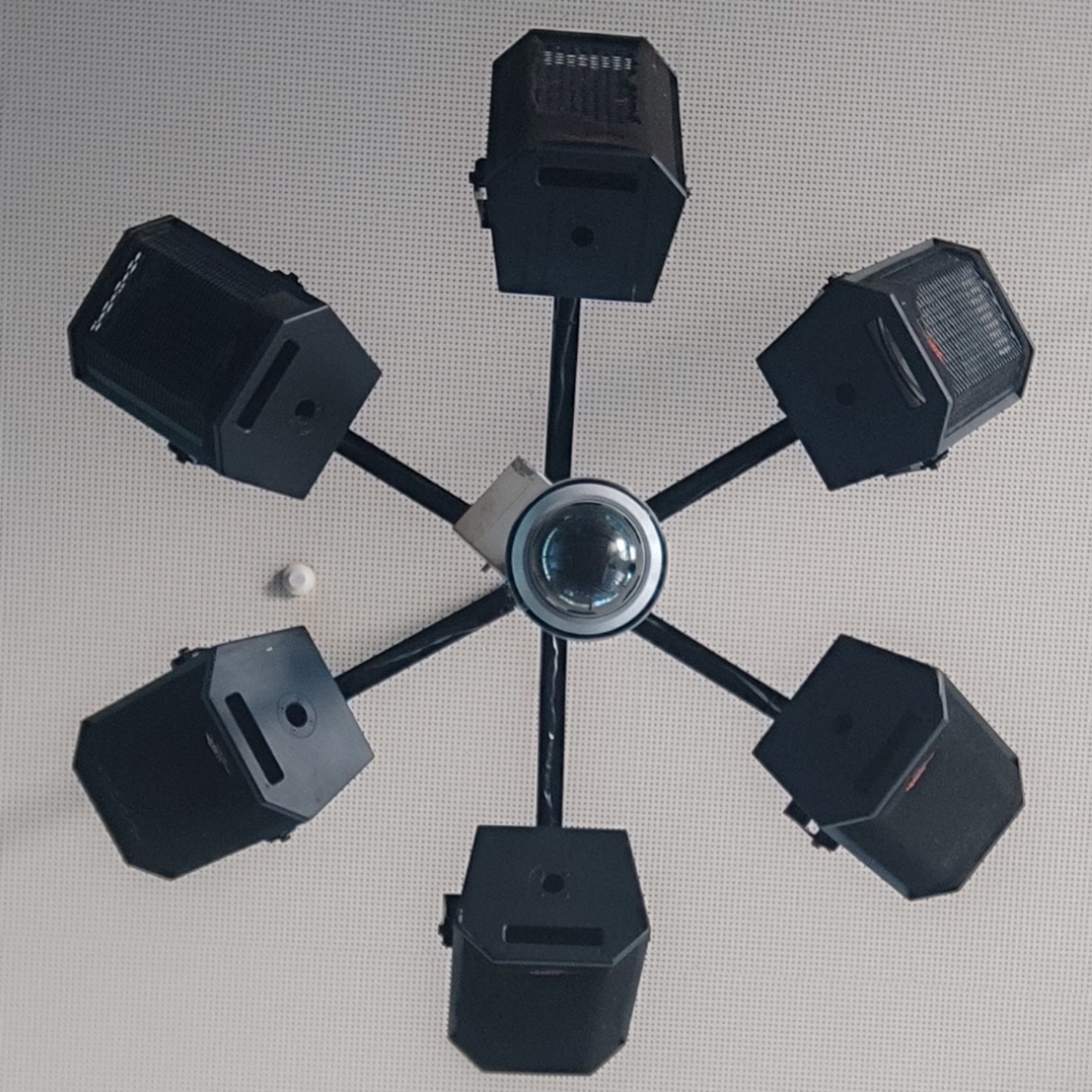Arch is aimed at people who know their shit so they can build their own distro based on how they imagine their distro to be. It is not a good distro for beginners and non power users, no matter how often you try to make your own repository, and how many GUI installers you make for it. There’s a good reason why there is no GUI installer in arch (aside from being able to load it into ram). That being that to use Arch, you need to have a basic understanding of the terminal. It is in no way hard to boot arch and type in archinstall. However, if you don’t even know how to do that, your experience in whatever distro, no matter how arch based it is or not, will only last until you have a dependency error or some utter and total Arch bullshit® happens on your system and you have to run to the forums because you don’t understand how a wiki works.
You want a bleeding edge distro? Use goddamn Opensuse Tumbleweed for all I care, it is on par with arch, and it has none of the arch stuff.
You have this one package that is only available on arch repos? Use goddamn flatpak and stop crying about flatpak being bloated, you probably don’t even know what bloat means if you can’t set up arch. And no, it dosent run worse. Those 0,0001 seconds don’t matter.
You really want arch so you can be cool? Read the goddamn 50 page install guide and set it up, then we’ll talk about those arch forks.
(Also, most arch forks that don’t use arch repos break the aur, so you don’t even have the one thing you want from arch)
I’d just like to vent that these kind of discussions are one of the big turnoffs of the Linux community in general. People speak “in absolutes”.
You either do it this way or you’re a dumbass. You either use the distribution I like or you’re doing it WRONG. You shouldn’t use Arch because you’re not experienced enough, you should use Mint for an arbitrary amount of time before you graduate to the good stuff.
You friends get way too worked up over other people’s personal preferences and push your biased and subjective views as facts.
Is Arch Linux the right fit for a newbie to Linux? The right answer is “it depends”, not “never”. Would I recommend Arch to my mom? No. Would I recommend it to my programmer colleague who already lives in the Powershell? Sure, why not.
I would, however, recommend Arch if you’re a Linux novice looking to learn about Linux in a more accelerated pace.
This post is a little cringe. Endeavor OS is a great Arch Experience for those who want a little preconfiguration and a GUI install. I’ve since moved onto doing it the arch way, but EOS was a great foot in the door and I know for a fact I’m not alone. Ive learned more about Linux in 2 years going from EOS to Arch (and running a proxmox server) than I would have running some “beginner friendly” distro. Really wish folks would stop gatekeeping.
EOS btw.
This was a big driver for my distro hopping, until I landed on purple Arch. I’ll either go to the blue team or Gentoo or LFS or something if I decide to hop again.
My struggle was that more beginner-friendly distros like mint and Fedora workstations were too beginner-friendly. I struggled to find things to learn because I installed it and had an out-of-the-box windows experience
I struggled to find things to learn because I installed it and had an out-of-the-box windows experience
And that’s a good thing! Non-technically-inclined ppl are wary of instability issues and having to work with the terminal to fix their daily driver. If the OOTB experience is good and the UX is comparable or better than Windows - they will be more likely to stay.
If someone is accepting the fact that shit might go sideways, is willing to learn through experiencing issues first-hand or simply likes to spend time fiddling with their OS to find the perfect setup for them - that should be the Arch- and Arch-derivatives audience.
Agreed! It was a struggle for me and a boon for others.
This is something I run into rather often because I crunch through information. Just skip me to the intermediate course and give me a synopsis of the beginner course and most of the time I’m off to the races
If someone is accepting the fact that shit might go sideways, is willing to learn through experiencing issues first-hand or simply likes to spend time fiddling with their OS to find the perfect setup for them - that should be the Arch- and Arch-derivatives audience.
But once you leave the comfort of your parents house, time is money and no one has a spare twelve hours to get a functional OS together when another distro would do it in minutes.
Absolutely agreed! Arch wiki helps with this as well.
Although Ive been using linux for 2 years now, and i still want an installation manager with sane defaults.
Although Ive been using linux for 2 years now, and i still want an installation manager with sane defaults.
Have you heard about our Lord and Saviour, Debian?
Meanwhile random people just using SteamOS and being happy.
yea, but I feel like it’s worth saying that steamdeck (where most of the steamos instances are) runs primarily in steam mode, and runs immutable OS by default so it’s pretty hard to actually mess that up. Plus steam manages most updates for you instead of you managing the updating yourself, which also helps remove the skill factor.
Android looks at SteamOS from the distance
SteamOS falls into the category of about 2 arch forks that have a reason to exist.
Don’t know about Cachy but Endeavour is not even a fork. It’s just Arch with a fancy installer.
And nice gui apps, default settings, nice community and cool branding.
Didn’t both distros have Btrfs auto snapshots. Same as Garuda. Anything broken? Just a reboot, arrow keys, and rollback.
EndeavorOS is not automatic but you can set it up with one terminal command.
“I didnt read the changelogs”
I have never read the changelogs and I have never broken my EOS install ever.
Weak bait.
- Arch users everywhere: You MUST read the Arch news files before updating.
- Also Arch users when updating: Oops, I forgot to read the news file.
- pacman when updating: I have pre install hooks but I don’t print the news files updates by default because that’s probably bloat or something.
Make it make sense
while you do have a point, i’m still having issues with taskwarrior printing it’s update notifications, even after opening an issue and the maintainers patching it.
The thing is, i use arch on 3 different devices, and i don’t need to see every news entry 3 times, so yes in my case having it as default in pacman would indeed be bloat.
That said, there is PLENTY of places where I think arch could have saner defaults. but the beauty of arch is that it is made to be configured exactly the way you like it, so you really can’t fault arch as much in this case, compared to other distros that try to take all decisionmaking away from the user.
You can never be 100% certain the news file didn’t update between the three invocations. If you aren’t refreshing that page between invocations then you aren’t actually using Arch the way it was designed.
well you can never be 100% certain your laptop won’t spontaneously die either.
for any new arch user, i do recommend keeping an archiso live USB around in case something really does happen - since every arch user should know the basics of how it works, it should be easy enough to recover as well.
knowing that, i really only check the news out of curiosity, since i’m not a grub user i haven’t had arch be unbootable since i started using it years ago. even if it did i’m confident enough it’d be a quick fix.
Then I never want to see you telling someone they should’ve checked the news file before updating!
Removed by mod
That was solved in about 10min with a liveusb and replacing grub with systemdboot
Try explaining that to a newbie
I am not a newbie and wouldn’t even know how to do it without using a manual (archwiki)
You would, it’s very very straightforward they made it very simple. I literally walked multiple non-technical users through it when it happened because I have moved some of my friends and family to Linux. I won’t say that it wasn’t tedious and that it wasn’t annoying for them but they got through it just fine
I stopped using grub after that pain in the ass
Granted that for most newbies doing archchroot from a live USB is complicated enough to reinstall. In any case, as you said, systemd-boot works fine and it’s the default now in EOS so who cares.
For example a friend of mine decided to reinstall bazzite because he changed his GPU from nvidia to amd, when and uses the default drivers… Yes a simple search in bazzite’s download page shows the three coands that have to be executed to rebase the system to the non nvidia one if you like having extra space but… A full reinstall is crazy.
On the contrary, I’d still argue it’s a good distro for beginners, but not for newbies. people who are tech-sawy and not hesitant to learn new things.
I jumped straight into EndeavorOS when I switched to Linux, since arch was praised as the distro for developers, for reasons.
Sure, I had some issues to fight with, but it taught me about all the components (and their alternatives) that are involved in a distro.
So, once you have a problem and ask for help, the first questions are sorts of “what DE/WM do you use?.. is it X11 or wayland? are you using alsa or pipewire?”.
Windows refugees (like me) take so many things for granted, that I think this kind of approach really helps in understanding how things work under the hood. And the Arch-wiki is just a godsend for thst matter. And let’s be real, you rarely look into Arch-wiki for distros other than Arch itself, since they mostly work OOTB.
The Arch-wiki was my main reason for switching to arch. When I used an ubuntu based distro I felt like I had to rely on forum posts to figure out anything whereas with arch everything is documented incredibly well
True, between arch and gentoo wiki you can hardly find any other information that is worth your while.
a lot of it applies to other distros though. its a lot of help in a pinch.
Veterans will always go back to Debian. It is inevitable.
We, long-time users of Linux, all have our opinions based on various preferences. The thing is that a lot of these preferences are pretty technical, like Ubuntu having snaps, Fedora and Mints’ flat pak policies, etc…
For the average user, they will not know what this is or even see a difference between the systems at first. The linux community would do better if we could have a unified front on distro recommendations. People will switch distros as they learn and their curiosity grows.
I think, we should ask people to pick based on their DE preference. If they want something like windows, let them have Mint or Kubuntu, if they want something closer to mac, let them have Ubuntu. I say this as someone who likes Fedora Plasma spin.
Everything else, is just information overload and will give users decision paralysis.
Our goal should be conversion of users. Once our numbers start growing, then things will pickup. Just imagine if we had office and adobe products here. How many people would be able to switch. I still use windows on my work computer as there is a single app holding me back.
Please, do not bring adobe and office pack there for god sake…
Why? A lot of people specifically do not use Linux for this reason. Like it or not, those apps are ingrained in the business world.
People are not going to sacrifice their income to use Linux. That is why I have a second computer just for windows for work.
If it weren’t for that, I could just use one computer with 2 user accounts.
A beginner to what, to pacman, to arch, to rolling distro, to linux, to unix, to a PC, to using man-made tools …
I made an installation to an old pc once, I though it would last a while, and since the users could barely understand what an on/off button does, they just wanted google and facebook, so it was a wm with two browsers, daughter already knew what chrome was, and in the login shell I wrote a script that each new day it booted it attempted pacman -Suy --noconfirm then once a week the cache was emptied and the logs trimmed.
That was before covid, a couple months ago I met her, she said it has been working fine every since.
So there is your dinner
PS Actually it wasn’t arch it was artix with runit but that is about the same
It’s a good beginner distro if you want to stumble, fall, and learn things. It’s not a distro where everything is all good right out the box. For that, maybe try something like Linux Mint Debian Edition or Bazziteos
I started with mint more than 10 years ago because a friend of mine told me it was one, if not the best, distro for newbies (that was a fucking lie). Idk how mint is doing today but back then was kind of a mess and dealing with it wasnt easy, so i dont really know how or why i switched to debian for a while. With debian i had a lot of problems with some software, mostly proprietary drivers for esotic hardware i was running back then due to me buying the cheapest laptops available, so i started distro hopping for a while. Every distro but fedora was debian based so it felt a lot like a more of the same experience and I felt stuck in a loop where i was eventually gonna reinstall my whole system after breaking something i didnt even know existed.
Then one day i found arch. Installing it wasnt as easy as clicking install on the live system’s guy, but just by following the wiki general instructions i didnt have any issues the first time. It felt good. Building the system block by block helped me understand how things work, the package manager was the best i had seen and the newbie corner basically had the solutions for all my screw-ups, even more than ask-ubuntu did. Everybody in the community was super helpful (even some of the devs). Then there was the AUR, with almost every piece of esotic or proprietary software i needed, much easier than adding some random guy’s repositories to apt or enabling backports on debian. Also i found out that i prefer having a rolling release. With arch i learned how to use and maintain my system, and i just stuck with it.
That said, just how some use linux just to brag about it with their normie friends, many many people use arch to brag about it with other linux users (like my friend did), mostly beacause arch has the infamous reputation that it is hard to install, hard to maintain, easy to break. Which is actually not that bad considering that all these people are gonna end up posting in the newbie corner lol.
Truth is that arch is not harder than any other distro. It only comes down to your will to learn and RTFM What i think worked for me was the transparency. Nobody said it was as easy to use as windows, but nobody in the wiki said “dont do this unless you are an experienced user”. Arch is not another fork of ubuntu pretending to be “even more user friendly”, it’s just arch.
I think the problem is about distros like antergos (rip), manjaro, garuda, endevour trying to oversimplify something that only needs you to RTFM only ending up breaking something they tried to automate and hide behind a curtain that wasnt meant to be automated and was meant to be learned to manage, by hand
EDIT: spelling. I’m a non-english speaker, if you find any more errors just tell me and i will correct them (or clarify something better)
I think mint is crazy better these days compared to 10 years ago, and it probably just came down to “we want to be user friendly to those who need their hands held” crashing into “actual users who need their hand held are trying it out.” 10 years ago, I think there simply wasn’t enough interested in Linux outside of Linux circles to properly test and figure things out, not to mention the strides the software itself has made in supporting more hardware more seamlessly.
The thing about RTFM is that users don’t, and the users that stuff like Mint is geared towards is those who when asked to read a wiki page, will simply give up. Windows has a cottage industry of people who do various things to make it easier for that kind of user. For example, just installing Windows on a device for you (albeit with bloatware usually) complete with all the drivers for your hardware. For most of the hardware on a laptop (audio, internet, HIDs, USB), that’ll have you set for life without having to touch anything and for the graphics that’ll at least have you set for several years without having to touch anything. And it’s not like Linux doesn’t have this level of support, it’s just that Windows has this level of support for consumers and Linux typically has it relegated to the enterprise sphere.
That being said, it’s insane how easy it is now to just install Mint, or PopOS, or even Ubuntu and have a working system. But most users don’t even install their Windows, much less a completely foreign OS.
For what it’s worth, I have switched three machines of mine from Win10 to Mint in the last year, and in each case it was much easier and faster to install than Windows. And of course, daily use is much faster and smoother than Windows, but that is true of all distros. It’s just worth mentioning because mint is made to be the full featured user friendly experience (some might even call it bloated) out of the box, yet it’s still a rocket in comparison.
One was a typical work-issued Dell laptop w/ port replicator + M365, one was an old PC at home I built several years ago, and the last was an even older PC I built like 14 years ago.
Just yesterday at work I installed Win10 in VirtualBox so I could test a Windows app that gets built alongside our main embedded Linux software (used the VM since a certain popup window secondary to the main app wasn’t immediately working in Wine). Holy crap was it painful after being used to the Mint installer.
Then when I got home I decided to turn on that 14 year old system that’s been off for a month (when I installed the latest point release 22.1) to let it update. Even using the GUI updater, and even though it had to update the updater itself before updating however many dozen packages AND the kernel, I timed the entire process at five minutes flat. On the computer from 2011, with a pretty old & small SATA SSD system drive. And you can use the PC like normal until it’s done, when it shows a banner suggesting you reboot when you can because of the kernel update.
Again, nothing special in the Linux world where software is actually created with users put first. But still noteworthy for being the “easy” distro that looks a lot like Windows when you first boot it up.
I’m not posting this to say anything negative about Arch, either. That kind of distro is very important to begin with, and Arch in particular seems it’s good enough that it might be the new Debian. Especially with SteamOS switching to it.
LINUX IS AN EXPERIENCE NOT SOMETHING TO ENDLESSLY DEBATE ABOUT.
Literally never had EndeavourOS break in any way.
Last time might have been the GRUB issue that affected all of Arch. If you use GRUB that is, since it’s not the default on EndeavourOS. Next time might be old package repos being shut off, but only if your install is older, plus there’s already the second announcement with simple instructions regarding that on Arch News. Also, it will just block updates.
I’ve put two people without any prior knowledge on EndeavourOS, didn’t hear any complains either. I myself had no prior knowledge in Linux and hopped from Kubuntu to OpenSUSE Tumbleweed to Garuda Linux in short succession. I only switched to EndeavourOS after Garuda repeatedly broke. Been on it for 2 years without an issue I think.
I know this is not a representative study and as a computer scientist, I do grasp things quickly, but I strongly oppose the notion that EndeavourOS is not beginner friendly.
people who unironically recommend anything arch-based (haha yes steamos is based on arch, yes you’re very very clever, i’m sure you can even figure out why it’s an obvious exception if you think about it for a minute) are just detached from reality and simply want to be part of a group.
The only time arch is suitable for beginners is installing it in a VM to learn linux via brute force, after you’ve gotten used to going through that process you’ll have a very solid base of knowledge for using a more suitable distro.
I went from Windows to Mint, to Pop-OS, to EndeavourOS and haven’t left EOS.
My time with Mint and Pop were about a week each. I switch from Windows to Linux 2 years ago.
For my experience, jumping into Arch feet first has been a great learning experience. My desktop PC is a gaming PC first, so having the most up to date packages has been great. It’s helped ‘de-mystify’ Linux for me. I’ve had to troubleshoot issues, but thanks to Arch’s excellent and extensive documentation, with some light reading I’ve manages to make it work.
I’m now moving on to setting up my own Homelab/Server, which will NOT be Arch based (…unless…?), because the experience with learning how to navigate Linux with Arch has given me the confidence to tackle something I have absolutely no experience in (NETWORKING).












